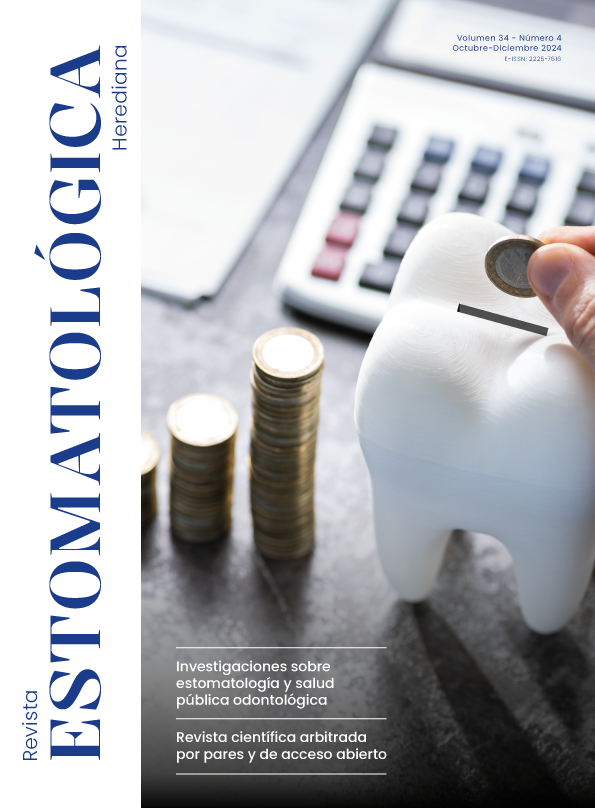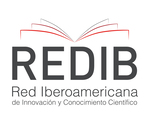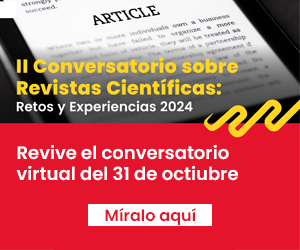Inhibitory effect of the methanolic fraction of Oxapampa propolis on different isolated genotypes of Streptococcus mutans in children with caries
DOI:
https://doi.org/10.20453/reh.v34i4.6158Keywords:
Streptococcus mutans, propolis extract, dental caries, bacterial inhibitionAbstract
Objective: To determine the inhibitory effect of the methanolic fraction of propolis from Oxapampa, Peru, on different genotypes of Streptococcus mutans in children diagnosed with caries. Materials and methods: 150 oral swab samples were collected, seeded for isolation of S. mutans and then identified by biochemical tests of carbohydrate fermentation, Api 20 Strep (bioMérieux) and conventional PCR. The 138 strains isolated and identified from patients and the S. mutans ATCC® 25175™ control were confronted with the methanolic fraction by the disk diffusion method, having as positive control 0.12% chlorhexidine and negative control Milli-Q water and DMSO (1:1). Results: It was found that the inhibition diameter of the strains extracted from children diagnosed with caries against the methanolic fraction showed greater diameter (14.13 mm) in relation to the strain of S. mutans ATCC® 25175™ (10.16 mm) with statistically significant differences. In the genotyping of the 138 strains with the different specific primers (c, e, f, and k), it was found that 63.77% belonged to genotype c, 21.73% to genotypes c and e, and 14.50% to genotypes c and f. Conclusions: The methanolic fraction of Oxapampa propolis presents inhibitory activity on S. mutans strains isolated and genotyped in children diagnosed with caries. In addition, it presents greater inhibitory activity in strains obtained from children compared to S. mutans ATCC® 25175™.
Downloads
References
Ojeda-Garcés JC, Oviedo-García E, Salas LA. Streptococcus mutans y caries dental. CES Odontol [Internet]. 2013; 26(1): 44-56. Disponible en: http://www.scielo.org.co/scielo.php?script=sci_arttext&pid=S0120-971X2013000100005
De la Fuente J, Sifuentes MC, Nieto ME. Promoción y educación para la salud en odontología. Ciudad de México: Manual Moderno; 2014.
Instituto Nacional de Investigación Dental y Craneofacial. La caries dental [Internet]. NIH; 2019, abril. Disponible en: https://www.nidcr.nih.gov/espanol/temas-de-salud/la-caries-dental
Basso ML. Conceptos actualizados en cariología. Rev Asoc Odontol Argent [Internet]. 2019; 107: 25-32. Disponible en: https://raoa.aoa.org.ar/revistas/?roi=1071000026
Brambilla E, García-Godoy F, Strohmenger L. Principles of diagnosis and treatment of high-caries-risk subjects. Dent Clin North Am [Internet]. 2000; 44(3): 507-540. Disponible en: https://pubmed.ncbi.nlm.nih.gov/10925771/
Clarke JK. On the bacterial factor in the ætiology of dental caries. Br J Exp Pathol [Internet]. 1924; 5(3): 141-147. Disponible en: https://pmc.ncbi.nlm.nih.gov/articles/PMC2047899/
Shibata Y, Ozaki K, Seki M, Kawato T, Tanaka H, Nakano Y, et al. Analysis of loci required for determination of serotype antigenicity in Streptococcus mutans and its clinical utilization. J Clin Microbiol [Internet]. 2003; 41(9): 4107-4112. Disponible en: https://doi.org/10.1128/JCM.41.9.4107-4112.2003
Nakano K, Nomura R, Nakagawa I, Hamada S, Ooshima T. Demonstration of Streptococcus mutans with a cell wall polysaccharide specific to a new serotype, k, in the human oral cavity. J Clin Microbiol [Internet]. 2004; 42(1): 198-202. Disponible en: https://doi.org/10.1128/jcm.42.1.198-202.2004
Li L, Messas E, Batista EL Jr, Levine RA, Amar S. Porphyromonas gingivalis infection accelerates the progression of atherosclerosis in a heterozygous apolipoprotein E-deficient murine model. Circulation [Internet]. 2002; 105(7): 861-867. Disponible en: https://doi.org/10.1161/hc0702.104178
Agra da Silva R, Rodrigues AE, Ribeiro MC, Custódio AR, Andrade NE, Pereira WE. Características físico-químicas e atividade antimicrobiana de extratos de própolis da Paraíba, Brasil. Ciênc Rural [Internet]. 2006; 36(6): 1842-1848. Disponible en: https://doi.org/10.1590/S0103-84782006000600027
Manrique AJ. Actividad antimicrobiana de propóleos provenientes de dos zonas climáticas del Estado Miranda, Venezuela. Efecto de la variación estacional. Zootecnia Trop [Internet]. 2006; 24(1): 43-53. Disponible en: https://ve.scielo.org/scielo.php?script=sci_arttext&pid=S0798-72692006000100004
Bellón S, Calzadilla XM. Efectividad del uso del propóleo en el tratamiento de la estomatitis aftosa. Rev Cubana Estomatol [Internet]. 2007; 44(3). Disponible en: http://scielo.sld.cu/scielo.php?script=sci_arttext&pid=S0034-75072007000300008&lng=es&nrm=iso&tlng=es
Carrillo ML, Castillo LN, Rosalba M. Evaluación de la actividad antimicrobiana de extractos de propóleos de la Huasteca Potosina (México). Inf Tecnol [Internet]. 2011; 22(5): 21-28. Disponible en: https://www.scielo.cl/scielo.php?script=sci_arttext&pid=S0718-07642011000500004
Elgamily H, Safy R, Makharita R. Influence of medicinal plant extracts on the growth of oral pathogens Streptococcus mutans and Lactobacillus acidophilus: an in-vitro study. Open Access Maced J Med Sci [Internet]. 2019; 7(14): 2328-2334. Disponible en: https://oamjms.eu/index.php/mjms/article/view/oamjms.2019.653
Millones PA. Efecto antibacteriano de propóleos peruanos y acción de una fracción metanólica sobre un biofilm in vitro de Streptococcus gordonii y Fusobacterium nucleatum [tesis de doctorado en Internet]. Lima: Universidad Peruana Cayetano Heredia; 2021. Disponible en: https://hdl.handle.net/20.500.12866/9017
Hirasawa M, Takada K. A new selective medium for Streptococcus mutans and the distribution of S. mutans and S. sobrinus and their serotypes in dental plaque. Caries Res [Internet]. 2003; 37(3): 212-217. Disponible en: https://doi.org/10.1159/000070447
Salazar LA, Vásquez C, Almuna A, Oporto G, Santana R, Herrera CL, et al. Detección molecular de estreptococos cariogénicos en saliva. Int J Morphol [Internet]. 2008; 26(4): 951-958. Disponible en: http://dx.doi.org/10.4067/S0717-95022008000400027
Nakano K, Nomura R, Shimizu N, Nakagawa I, Hamada S, Ooshima T. Development of a PCR method for rapid identification of new Streptococcus mutans serotype k strains. J Clin Microbiol [Internet]. 2004; 42(11): 4925-4930. Disponible en: https://doi.org/10.1128/JCM.42.11.4925-4930.2004
Rodero L, Córdoba S, Vivot W, Campo M, Corfield P, Olguín C, et al. Método de difusión con discos para la determinación de sensibilidad a fluconazol en aislamientos de Candida spp. Rev Argent Microbiol [Internet]. 2006; 38(3): 155-163. Disponible en: https://www.redalyc.org/pdf/2130/213016796012.pdf
Ministerio de Salud (PE), Oficina General de Epidemiología y Dirección General de Salud de las Personas. Prevalencia nacional de caries dental, fluorosis del esmalte y urgencia de tratamiento en escolares de 6 a 8, 10, 12 y 15 años, Perú. 2001-2002 [Internet]. Lima: Minsa; 2005. Disponible en: https://www.dge.gob.pe/publicaciones/pub_caries/prevalencia_caries.pdf
Momeni SS, Ghazal T, Grenett H, Whiddon J, Moser SA, Childers NK. Streptococcus mutans serotypes and collagen-binding proteins Cnm/Cbm in children with caries analysed by PCR. Mol Oral Microbiol [Internet]. 2019; 34(2): 64-73. Disponible en: https://doi.org/10.1111/omi.12254
Delgadillo JR, Espinoza SB, Campodónico CH, Evaristo TA, Cáceres L, Gómez DN, et al. Presencia de Streptococcus mutans genotipo C en niños y adolescentes peruanos con caries. ODOVTOS Int J Dent Sc [Internet]. 2018; 20(3): 105-113. Disponible en: https://www.medigraphic.com/pdfs/odovtos/ijd-2018/ijd183k.pdf
Sánchez-Pérez L, Acosta GE. Estreptococos cariogénicos predominantes, niveles de infección e incidencia de caries en escolares. Estudio exploratorio. Rev ADM [Internet]. 2007; 64(2): 45-51. Disponible en: https://www.medigraphic.com/cgi-bin/new/resumen.cgi?IDARTICULO=11986
Arévalo-Ruano ML, Canacuán-Melo FY, Echeverry-Chica J, Salazar-González CL, Martínez-Delgado CM, Martínez-Pabón MC, et al. Molecular identification and genotyping of Streptococcus mutans from saliva samples of children in Medellin, Colombia. CES Odontol [Internet]. 2014; 27(2): 47-60. Disponible en: https://revistas.ces.edu.co/index.php/odontologia/article/view/3241
Gamboa FO. Identificación y caracterización microbiológica, fenotípica y genotípica del Streptococcus mutans: experiencias de investigación. Univ Odontol [Internet]. 2014; 33(71): 65-73. Disponible en: https://doi.org/10.11144/Javeriana.uo33-71.icmf
Biswas S, Biswas I. Complete genome sequence of Streptococcus mutans GS-5, a serotype c strain. J Bacteriol [Internet]. 2012; 194(17): 4787-4788. Disponible en: https://doi.org/10.1128/jb.01106-12
Nakano K, Ooshima T. Serotype classification of Streptococcus mutans and its detection outside the oral cavity. Future Microbioly [Internet]. 2009; 4(7): 891-902. Disponible en: https://doi.org/10.2217/fmb.09.64
Galgowski C, Pavanelo S, Rau M, Debiase M, Althoff S, Guedes A, et al. Mollicute anti-adhesive and growth inhibition properties of the methanolic extract of propolis from the Brazilian native bee Melipona quadrifasciata. Chem Biodivers [Internet]. 2021; 18(1): e2000711. Disponible en: https://doi.org/10.1002/cbdv.202000711
Downloads
Published
How to Cite
Issue
Section
License
Copyright (c) 2024 Mayra Lizeth Vargas Gil, Pablo Alejandro Millones Gómez, Lidia Yileng Tay Chu Jon , Ana Cecilia Valderrama Negrón, Ingrit Elida Collantes Diaz, Dora Jesús Maurtua Torres

This work is licensed under a Creative Commons Attribution 4.0 International License.
The authors retain the copyright and cede to the journal the right of first publication, with the work registered with the Creative Commons License, which allows third parties to use what is published as long as they mention the authorship of the work, and to the first publication in this journal.























